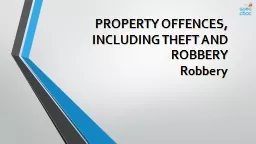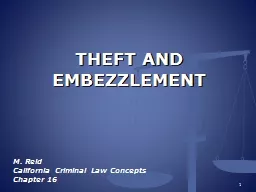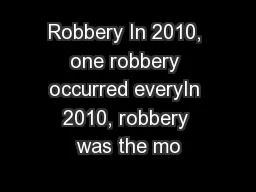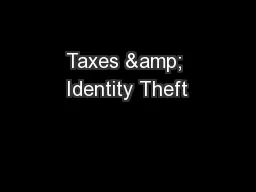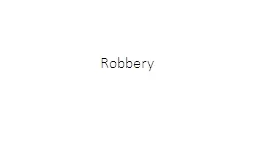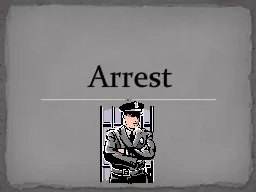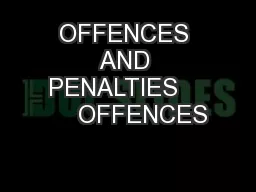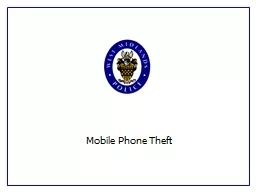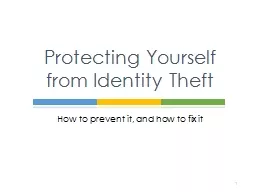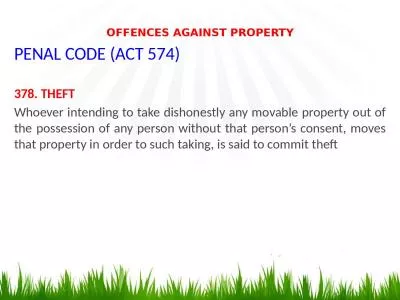PPT-PROPERTY OFFENCES, INCLUDING THEFT AND ROBBERY
Author : stefany-barnette | Published Date : 2018-03-14
R obbery Robbery Defined in Section 8 Theft Act 1968 A person is guilty of robbery if he steals and immediately before or at the same time of doing so and in order
Presentation Embed Code
Download Presentation
Download Presentation The PPT/PDF document "PROPERTY OFFENCES, INCLUDING THEFT AND R..." is the property of its rightful owner. Permission is granted to download and print the materials on this website for personal, non-commercial use only, and to display it on your personal computer provided you do not modify the materials and that you retain all copyright notices contained in the materials. By downloading content from our website, you accept the terms of this agreement.
PROPERTY OFFENCES, INCLUDING THEFT AND ROBBERY: Transcript
Download Rules Of Document
"PROPERTY OFFENCES, INCLUDING THEFT AND ROBBERY"The content belongs to its owner. You may download and print it for personal use, without modification, and keep all copyright notices. By downloading, you agree to these terms.
Related Documents

